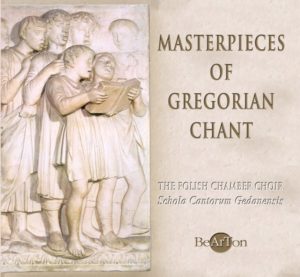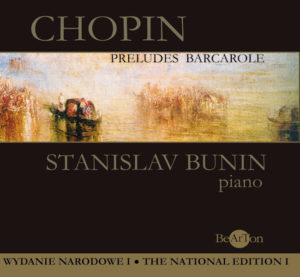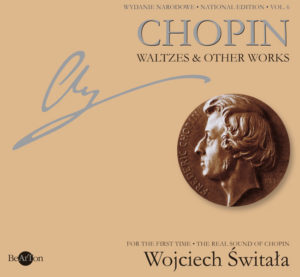Kallpa Duo – Tango
Kallpa Duo – Tango
Cat. No. CDB050
Music disc: CD-AUDIO
Composers:
Astor Piazzolla (1921-1992)
José Antonio (Ñico) Rojas Beoto (1921-2008)
Máximo Diego Pujol (*1957)
Performers:
Kallpa Duo:
Roch Modrzejewski – quitar
Szymon Klima – clarinet
Disc content:
Astor Piazzolla (1921-1992) – Histoire du Tango
- Bordel 1900
- Café 1930
- Nightclub 1960
- Concert d’aujourd’hui
Astor Piazzolla
- Oblivion
José Antonio (Ñico) Rojas Beoto (1921-2008)
- Guajira A Mi Madre
Máximo Diego Pujol (*1957) – Suite Buenos Aires
- Pompeya
- Palermo
- San Telmo
- Microcentro
Astor Piazzolla
- Libertango impressions
Total time – 46’43”
Listen a part
42.99złAdd to basket
© ℗ 2010 Bearton
Tango liturgy
In the language of quechua, kallpa means strength, power. Words intertwine with reality, they derive from it and at the same time inspire, and their choice subconsciously determines the relationship between the speaker and what he is saying. I do not know if choosing the word kallpa for the name of the duo was co incidental – the magic of sound definitely did its work, also a certain exoticism and awareness that the word originates from Latin American culture; therefore, on a deeper, subconscious level, that name not incidentally, points us in the direction of the world of South American culture. It is no surprise that two young musicians form Krakow turned their interest towards the music of the New World, the source of new energy and inspiration for the artists of the old continent. I remember the gradual awakening of interest in the culture in the 19705. It first began with literature, Iberian American prose consistently published by the Krakow based Wydawnictwo Literackie Publishing House. Mario Vargas Llosa, Juan Rulfo, Jose Lezama Lima, Jorge Luis Borges, Ernesto Sabato are only a few that represent this trend.
Latin American music was exotic; during my studies at the Faculty of Iberian Culture, which had just opened in Krakow, I started discovering this abundant world of new sounds. In this environment, somewhere between the Jagiellonian University and the Piwnica Pod Baranami Cabaret, the first Guitar Festival was born thanks to Czesław Droździewicz, a great enthusiast of guitar music, specifically Latin American guitar music. Thanks to him I was able to experience Piazzolla’s music live. Earlier, I remember the magic of sitting in a group, listening to his vinyl in the home of our professor Quico Bello. That recording created together with the late jazz baritone saxophonist Gerry Mulligan was like discovering new lands. An even greater experience was walking through those newly discovered lands, when Piazolla’s music first sounded in Krakow – Concerto for Bandoneón, Guitar and Orchestra, performed by no one else but the outstanding Argentinian duo, guitarist Roberto Aussel and bandoneón virtuoso Juan Jose Mosalini. The most memorable, however, seems to be the mystic moment when in Piwnica Pod Baranami, after the cabaret had ended, Juan Jose stayed on stage with his bandoneón. That was a real Iiturgy, flowing from the soul, a prayer, happiness and despair all in one. And so Piazzola touched Krakow and stayed here for good. At least for me I thought, but as it turned out not only for me. I had the opportunity to listen to his music numerous times, played by the Assad Brothers, Yo-Yo Ma, Gidon Kremer. I also listened to music of many other Latin American artists – Jorge Cardoso, Jorge Morel, Ariel Ramirez, Heitor Villa-Lobos and many, many more, until finally I came across the Kallpa Duo album.

Szymon Klima
And what a great surprise that was! Two young musicians had made very conscious choices of compositions and performed them with a feeling of style and an extreme musical maturity. This should not have been surprising; both of them come from families where musical traditions live on. I first met Szymon when he was still a child, listening to the best clarinetists at a Clarinet Festival organized by his father. It was then that he first came across jazz music and the klezmer tradition in the finest possible form, performed by Giora Feldman, an Argentinian Jew, who introduced Argentinian tangos to the klezmer melting pot. I have also heard a lot of good things about Roch; to me he is the continuation of the guitar movement in Krakow, which started with Czesław Droździewicz in the 19805. The meeting of these two talented musicians proved very fruitful. Combining the clarinet with the guitar turned out to be a very fortunate idea, for the very first notes of the clarinet bring to mind the bandoneón.
The album begins with The History of Tango (the original version written for flute and guitar), a journey through time, a picturesque story of the different phases of tango’s evolution. From the strongly rooted in the Latino tradition brothel to the concert hall, everything saturated in Piazzolla’s metaphysical harmony, who (thankfully) persuaded by Nadia Boulanger, revealed all that was intimate enough to want to hide, baring the true soul of a musician who uses tango as a way to uncover his deepest feelings.
First, Bordel 1900, because these were the beginnings of tango, played in Argentinian brothels, which besides physical pleasures offered food for the soul. This part is reminiscent of the loud and unbridled ways of these kind of places. The music is led in a kind of frantic rhythm of the milonga, very different from the traditional, like the one by Jorge Cardoso. But even here, especially in the second part of the composition, the feeling of emptiness after a moment of forgetting is marked by a few notes. Cafe 1930, on the other hand, is a piece filled with deep thought, meandering like the smoke from a cigarette. The sounds of the clarinet seem tired at first, the accompaniment of the guitar discreet and a bit lazy, we get the feeling of taking part in a cafe meditation, dimmed with alcohol and cigarette smoke and only here and there the waves of stronger emotions arrive – in a cafe, like those from the past, time flows more slowly. Nightclub 1960 is a whole scale of tensions; the composition is stretched between dynamic poles of expression. The series ends with Concert d’aujourd’hui, a bridge between the playful roots of tango and contemporary music. For dessert – a delicious dish in the form of Oblivion. Oblivion means forgetfulness, and that is what the music in this composition is; dim, escaping towards forgetting, lonely and desolate. Oblivion is like the memory of a bonfire, where under the ashes embers still glow ready to explode any minute. And that is the way this piece is played. After the first act, composed of Astor Piazzolla’s works, begins a guitar interlude, deriving from a Cuban dance Guajira for my Mother by Cuban guitarist Nico Rojas. The contrasting poetics, sensual pulsation and rocking rhythm of guajira, a dance of folk origin, were delivered by Roch with mastery. This mood immediately brings to mind Carlos Puebla and musicians associated with the Buena Vista Social Club. This is a real treat, and a great contribution in presenting the guitar creations of the recently deceased master, worshiped in a country that can also be proud of having one of the outstanding guitar music composers – Leo Brouwer.

Roch Modrzejewski
The second part of the album is a series of works of a less well known Argentinian composer Maximo Diego Pujol, whose poetics somewhat resemble those of Piazzolla. Nothing strange about it; both were raised on the same musical soil of Anibal Troilo, Carlos Gardel and many other tango exponents. From the delicate tango pulsation in Pompey we move on to more nostalgic sounds in Palermo and through saturated with building energy San Telmo we arrive at a culmination – Microcentro, which is a display of the musicians’ proficiency. A dense texture performed with an exceptional Iightness, the whole bringing to mind a rapid river full of currents, escaping somewhere into space in the search of the microcenter from the title. This selection of works is a certain whole, it is once again a voyage through places and impressions, and particularly a journey through emotions – a characteristic of the tango. The music played by two instruments of equal rank, happens through time, creating tensions like two dancers watchful of every gesture and emotion the joy of the moment and the sadness of passing all the way up to metaphysically touching the Absolute. Libertango, a display of the musicians’ ease, defines the ending. A free improvisation of the original work, whose title in a way invites us to play. Roch and Szymon show, that just like Piazzolla they are no strangers to improvisation and a jazz feel. In doing so they still remain true to the author’s stylistics, and most of all his inspirations, which come from music created live, just like jazz and tango. One last thing. I remember Juan Josć Mosalini talking about the bandoneón, he mentioned it roots – an instrument brought from Europe and used during Iiturgy instead of church organs. And so this is the way this music is outstretched throughout man’s life between the sacred and the profane, very deeply human, defining emotions and freeing them. The poetics of tango Iure all those who are willing to get carried away. The tango phrases are propelled by an inner movement relentlessly treading forward, forward and further forward, swallowing moments of elation, doubt and abandonment on the way. Yet always forward this is, I hope, the future of Roch’s and Szymon’s musical evolution.
Aleksander Małkiewicz





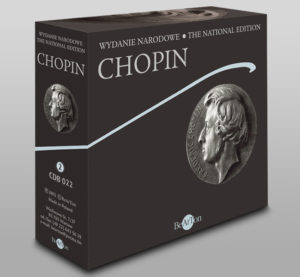










![Chopin – Walce [B] i inne utwory CDB047](https://www.bearton.pl/wp-content/uploads/Chopin-Walce-B-i-inne-utwory-CDB047-A-300x277.jpg)
![Chopin – Pieśni [B] CDB046](https://www.bearton.pl/wp-content/uploads/Chopin-Piesni-CDB046-A-300x277.jpg)





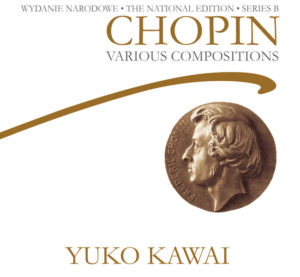

![Chopin - Mazurki i inne utwory [B] CDB038](https://www.bearton.pl/wp-content/uploads/Chopin-Mazurki-i-inne-utwory-B-CDB038-A-300x277.jpg)
![Chopin – Polonezy [B] CDB037](https://www.bearton.pl/wp-content/uploads/Chopin-Polonezy-B-CDB037-A-300x277.jpg)


